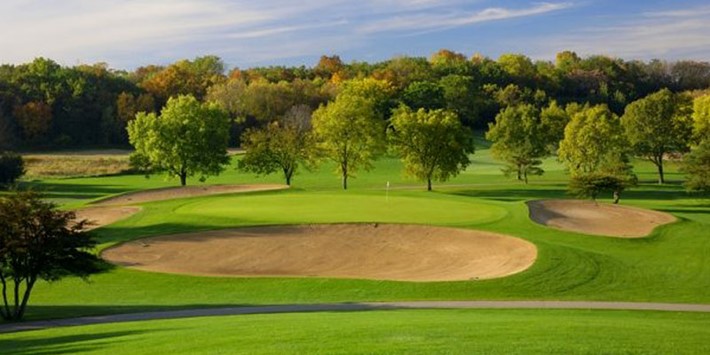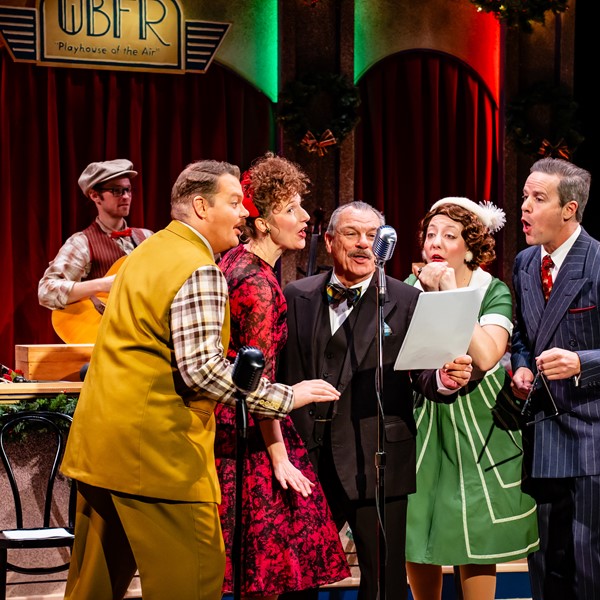
Classic Wisconsin Golf Courses
By Jerry Poling, special to travelwisconsin.com
The list of high-profile public courses carved into Wisconsin's golf landscape since 1980 is impressive. It includes Whistling Straits, Blackwolf Run, The Bog, Troy Burne, University Ridge, Trapper's Turn, SentryWorld, Horseshoe Bay and this year Northern Bay in Adams County, featuring replicas of some of the nation's greatest holes.
If golfers played just those courses, however, they would be shortchanging themselves. Golf in Wisconsin is so much more than places where Arnold Palmer or Jack Nicklaus left their architectural mark, where Vijay Singh won the PGA or where Pete Dye created one of his Dye-abolical bunkers.
The golf experience in Wisconsin isn't complete without playing some of the state's oldest, most revered courses. These classic designs have challenged golfers since the days of hickory shafts and gutta-percha balls. They're still solid tests of golf, despite titanium drivers and high-tech balls. Plus, they come with the maturity and character often missing in new courses.
Whether it's 106-year-old Forest Hills in La Crosse, early links favorite Lawsonia in Green Lake or Trout Lake, which symbolizes the end of a northwoods era, you'll want to venture into the past if you truly want to experience the best that Wisconsin golf has to offer.
Brown Deer Golf Course – Milwaukee
It's one course in Wisconsin that seems to have it all. It's old, dating to 1929. It's current, once again hosting the U.S. Bank Championship on the PGA Tour in 2006. It's one of Wisconsin's best. And it's open to the public as part of the Milwaukee County Park System.
Brown Deer Golf Course underwent a $2.25 million renovation in 1987, and it has been holding the PGA Tour event (formerly the Greater Milwaukee Open) since 1994. With tight, tree-lined fairways, a group of great, long par 4s, 10 water hazards, fast greens and more than 60 sand traps, it gives the tour players all they can handle. Play the back tees at your own risk.
A stylish clubhouse, great practice facilities and its convenience to all of Milwaukee's great summer attractions, including Miller Park and Summerfest, are more good reasons to put it on your must-play list. By the way, it's the course where Tiger Woods made his PGA Tour debut in 1996. He didn't win, but he did ace the 202-yard 14th hole.
6,759 yards. Par 71. Slope 133.
Forest Hills – La Crosse
In 106 years, the course has changed names four times, but the course itself hasn't changed much. Winding around the base of a city geographic landmark, Granddad Bluff, it's as lovely and pleasant to play as ever. You won't need to hit it a mile at Forest Hills -- the 80-acre course measures just over 6,000 yards -- but you will need to know how to play sidehill lies, decipher breaks on deceptive old greens and thread the needle when the holes head back into the shade of a coulee (also known as a valley between two bluffs).
Forest Hills opened as Schagkticoke in 1900 then became the private La Crosse Country Club for most of the 20th century. When the city reclaimed the deeded park land and a new La Crosse Country Club was built in Onalaska, the course went public in 1994 as The Bluffs. It was renamed Forest Hills in 1998.
The course is more than a mile from the Mississippi River, which flows through the city's downtown. However, golfers on the elevated 15th tee can see for miles, all the way to the bluffs on the Minnesota side of the river. If the scenery doesn't make you look up, the trains will. Forty trains cut through the fairways on holes 1 and 18 daily. Hitting over the trains is not allowed, although that rule may beat the mulligan as the one broken most often at Forest Hills.
6,076 yards. Par 71. Slope 128.
Lawsonia Links – Green Lake
For decades Lawsonia was considered one of the best public courses in the state, often hosting the state high school championships. Soon after it opened in 1930, it held the Little Lawsonia Open, featuring Ben Hogan, Sam Snead and Byron Nelson, the latter who once held the course record of 69.
Lawsonia is one of the state's first -- and still best -- links courses with its nearly treeless landscape, severe bunkering -- more than 90 total grass and sand bunkers -- and elevated putting surfaces. Legend has it that a boxcar was buried beneath the green on the 37th hole to create the green's high, vertical front wall.
Other tough holes, including the 239-yard par-3 10th and the 568-yard 13th, make Lawsonia as tough as ever, especially when the wind blows. If it's trees you seek, try Lawsonia's newer 18-hole course, the Woodlands.
6,764 yards. Par 72. Slope 130.
Old Hickory Country Club – Beaver Dam
Even after more than 80 years, Old Hickory doesn't play like it's old. The integrity of this design, which opened in 1920 with nine holes and expanded to 18 in 1968, is one reason why the Wisconsin State Golf Association has scheduled its biggest annual event, the State Amateur, at Old Hickory in 2008.
The original holes at Old Hickory were designed by Scotsman Tom Bendelow. He designed more than 400 courses around the country, including Medinah No. 3, where this year's PGA Championship will be held in August. Old Hickory looks and feels a little like Medinah, with rolling hills, fairways lined with mature trees and challenging greens. It offers variety, with the 577-yard 18th and the 135-yard seventh hole. The picturesque 14th hole, a sharp 393-yard dogleg, features a green with water on three sides. An old rock fence along the fourth hole is left over from the early 20th century, when Dodge County settlers farmed the land.
6,727 yards. Par 72. Slope 130.
Riverside Golf Club – Janesville
Only seven of the original nine holes from this 1924 gem remain, but even the newer holes are a stately 60 years old. Architect Robert Bruce Harris expanded the course to 18 holes and redesigned two of the old holes in 1946. One of Harris' holes, the 454-yard 16th, for years was considered one of the toughest par 4s in the state. The year after he worked at Riverside, Harris became a founding member of the American Society of Golf Course Architects.
Surprisingly, Riverside has no water hazards. However, with 57 well-placed bunkers and a variety of mature trees, including elm, oak and linden, it offers plenty of trouble.
Riverside still draws some of the state's best amateurs to the annual Ray Fischer Invitational. Two players who won that event, Skip Kendall and Steve Stricker, went on to successful PGA Tour careers.
6,508 yards. Par 72. Slope 123.
Trout Lake – Arbor Vitae
Don't let the yardage -- just 6,175 yards -- fool you. Built in 1924 on old logging company land when the lumbering era was grinding to a halt up north, Trout Lake is no pushover. Small, undulating greens, sharp doglegs (most of them to the left, to the delight of slicers) and plenty of trees frame the course. The layout, completed without the benefit of modern machines, hasn't changed much in 82 years. The course's namesake lake is visible but doesn't come into play, although the Trout River does.
Tucked into the Vilas County woods off Highway 51, Trout Lake looks and plays as idyllic as it sounds. With gently rolling terrain, it's a fairly easy walk, and the scenery alone -- especially if you're escaping an urban setting -- is worth the greens fee. A remodeled old farmhouse, complete with a screen porch in a grove of big pines, is a great place to relax after the round.
6,175 yards. Par 72. Slope 124.
Tuscumbia Country Club – Green Lake
The course bills itself as the oldest in Wisconsin, although the private Janesville Country Club claims to be two years older. Either way, Tuscumbia was there in 1896 when golf was gaining a foothold in Wisconsin and around the country. It opened as a five-hole design using tomato cans as cups. It expanded to nine holes in 1905 and 18 holes in 1918.
The course features mature trees and short walks between greens and tees. It's not long by modern standards, just over 6,300 yards, but some tight holes, grass bunkers and plenty of sand bunkers still challenge even the best golfers. One par 5, 560 yards, is long even by today's standards. A short par 3, 119 yards and severely uphill, also can be a tough par. Some small greens, typical of older courses, add to the feeling of what it must have been like to play golf more than a century ago.
6,308 yards. Par 71. Slope 124.
Newer Classics
Although they may not be old courses, a handful of outstanding golf clubs in Wisconsin have reached middle age. Built before the modern state golf course boom in the 1980s and 1990s, these courses slowly are being recognized as classics from the late 1950s and 1960s golf boom. They have withstood the test of time and thousands golfers who have taken a swing at their challenging holes.
Madeline Island Golf Club – La Pointe
The course, near the shore of Lake Superior and an old Native American cemetery, is one of just two on islands in Wisconsin. The other is Deer Run Golf Resort on Washington Island, at the tip of Door County.
Madeline Island Golf Club draws vacationing golfers who either have permanent homes on the only inhabited Apostle Island or are up north for a week and have arrived by car ferry from Bayfield.
This course was designed by famed architect Robert Trent Jones Sr. to play as an 18-hole layout. Seven of the large greens have two pins, one for the front and one for the back nine. The back-nine tees also are separate. For example, the first hole is 399 yards. The second time around, as No. 10, it plays 444 yards from a different teeing area and to a different pin on the same green. Several holes also have split fairways for each nine.
Construction on Madeline Island Golf Club began in 1965, and it opened in 1968. Laborers spent thousands of hours clearing trees off the rocky hillside and spreading topsoil, which was brought over from the mainland.
6,356 yards. Par 72. Slope 122.
Brown County Golf Club – Green Bay
Although it opened in 1958, the Brown County course near Green Bay still is one that every serious player should put on their must-play list. The course was one of the first designed by architect Lawrence Packard, and he went on to design many more well-known courses around the state and country, including the acclaimed Copperhead at Innisbrook in Florida.
Brown County is a state classic in that it has all the elements that make Wisconsin golf memorable -- rolling terrain, trees and water. Creeks come into play on eight of the 18 holes. Mature trees line the fairways. More than 50 sand traps complete the layout, which held the State Open the year after it opened.
6,749 yards. Par 72. Slope 133.
Naga-Waukee Golf Course - Delafield
Opened in 1966 as part of the Waukesha County Park system, Naga-Waukee has been one of the most popular public courses in the region ever since. It's long enough and tough enough to be a championship course, but it draws weekend players with its views of Pewaukee Lake and challenging terrain.
The course was designed by Lawrence Packard on more than 200 acres of former farmland. Packard crafted several memorable holes. The best among them may be No. 14, a 542-yard par 5. It doglegs twice down a wooded hillside. Before teeing off on 14, take a moment to enjoy the view of the lake in the distance. The 16th, a downhill par 3, also offers a view of the lake.
6,830 yards. Par 72. Slope 126.
House on the Rock Resort - Spring Green
For many years after it opened in the late 1960s, the course, then known as The Springs, House on the Rock Resort operated with a trailer for a clubhouse. It didn't seem fitting for a design by Robert Trent Jones Sr., who was working in the shadow of another famous architect, Frank Lloyd Wright.
Although it's now the main draw of a luxury resort and not far from the House on the Rock state landmark, the course nestled in a lower Wisconsin River valley is as relaxing as ever. Jones blended the holes into the hillside much like Wright used to design his buildings to match the landscape.
The ninth and 18th holes end at the same double green, which is more than 100 yards long and is guarded by a pond at the base of the valley. A third nine, designed by Roger Packard and Wisconsin native Andy North, a former U.S. Open champion, opened in 1994.
6,554, Par 72. Slope 132.
Brute, Highlands at Grand Geneva - Lake Geneva
Originally part of the Playboy Club at Lake Geneva, the two championship courses underwent a $30 million renovation when they were bought out by the Marcus Corporation and became part of the Grand Geneva Resort and Spa. The Highlands originally was called the Briar Patch.
The Brute, designed by Robert Bruce Harris, opened first in 1968. One of the state's first modern championship courses, it features elevated tees and greens, huge greens and 68 sand traps. Even old Bunny Lake comes into play.
The Highlands originally was a collaboration between Jack Nicklaus, one of the best golfers of all time, and Pete Dye, who went on to design some of the most famous courses in the country, including Whistling Straits at Kohler. Nicklaus and Dye left the project when The Playboy Club owners changed their resort plans in the middle of construction. A recent redesign by architect Bob Cupp straightened out some of the old quirks, preserved the woods and wetlands beauty and brought it up to par.
Both courses still are being improved. This season, the Brute has updated bunkers, while on the Highlands holes 9, 12 and 15 have been remodeled.
Brute. 6,997 yards. Par 72. Slope 136.
Highlands. 6,633 yards. Par 71. Slope 125.
A Place in History
Wisconsin has numerous courses that date to the late 19th century or early 20th century. If you appreciate a bit of golf history, you'll want to consider these traditional, charming links as you travel around the state.
Tagalong Golf Club - Birchwood
In the early 1920s, wealthy businessman Frank Stout built a 9-hole course on the shore of lovely Red Cedar Lake to go with his Adirondack-style family lodge (now Stout's Island Lodge). Tagalong, patterned after Scottish links course with deep grass bunkers, opened in 1925. The reigning U.S. Open and British Open champions, Willie McFarlane and "Long" John Barnes, christened the course with a match. A second nine was added in recent years.
Eagle Springs - Eagle
Dating to 1893, Eagle Springs, a 9-hole course east of Whitewater, partially was designed by A.G. Spaulding, the former Chicago White Sox player and manager and founder of the famous sporting goods company. Take a shot at the “volcano” hole then cool down with a beverage after the round under the apple tree that grows through the roof of the clubhouse.
Quit Qui Oc - Elkhart Lake
Golfers have been teeing it up on the tight fairways at Quit Qui Oc for more than 80 years on a 9-hole course originally designed by noted architect Tom Bendelow in 1925. A second nine was added in 2001.
Peninsula State Park Golf Course - Door County
Opened as a six-hole course in 1921, Peninsula State Park Golf Course was expanded to 18 holes by 1930 and has been thrilling golfers to Wisconsin's top vacation destination ever since with its rolling layout and its views of Lake Michigan and nearby forests.
Plum Lake Golf Club - Sayner
Built in 1909, Plum Lake Golf Club is a 9-hole Vilas County course that lists 1902 U.S. Amateur champion Louis James as one of its original members, along with other notable wealthy Chicagoans who used to spend their summer vacations up north. Take your lumps at the "sugar bowl" hole. Then enjoy the view of the lake from the porch of the 1923 clubhouse.
Spooner Golf Club - Spooner
This popular 18-hole course has been challenging northwoods golfers since 1930 when Thomas Vardon, the brother of six-time British Open champion Harry Vardon, designed the original nine. Vardon's finishing hole at Spooner Golf Club, a lovely dogleg par-4 around a lake, still is considered one of the best in the state.
Jerry Poling of Eau Claire is co-author, along with Jeff Mayers of Madison, of Wisconsin Golf Getaways, a guide to the best public golf courses in Wisconsin (Trails Books, 2000).
Deals










